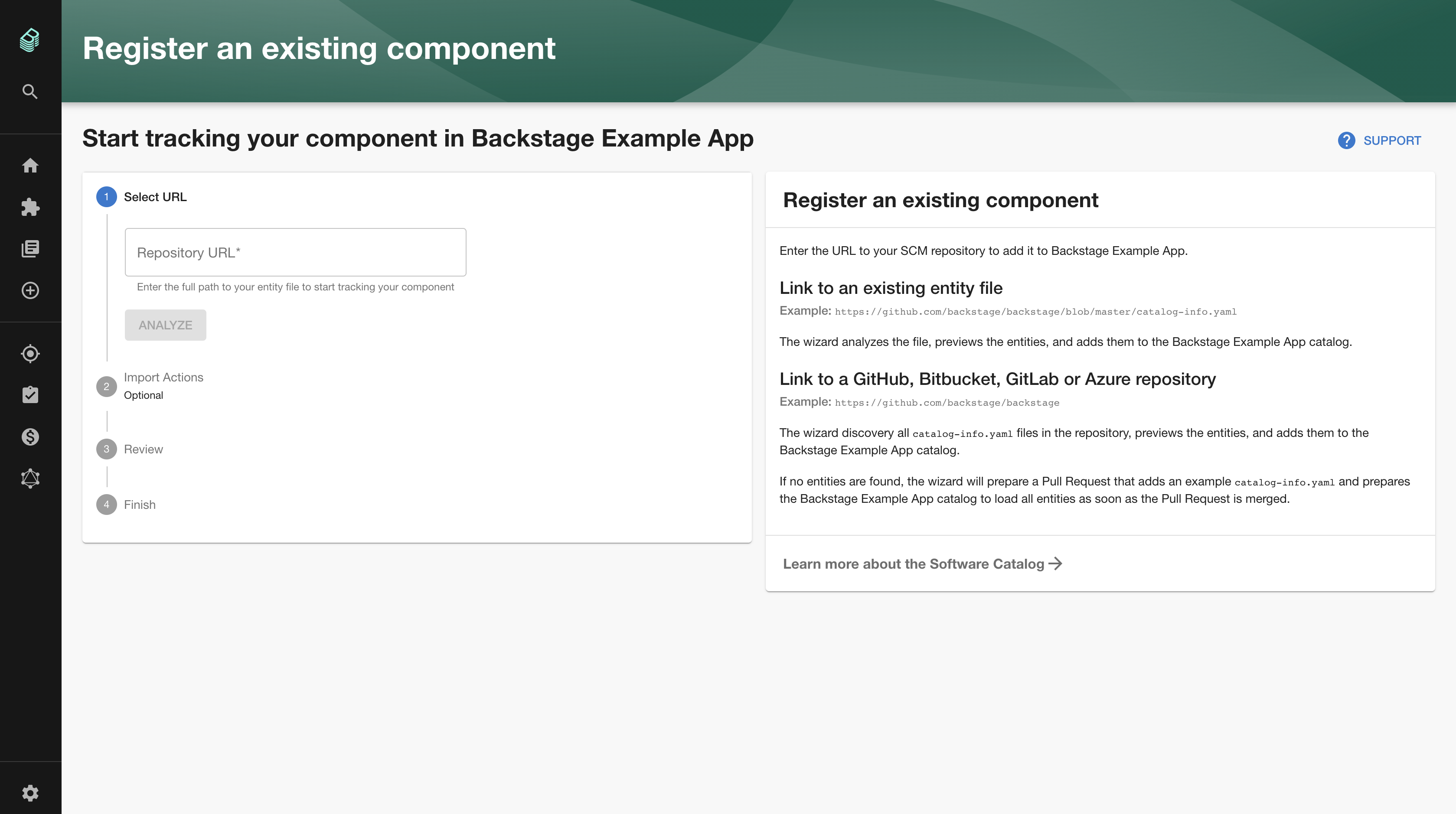The Catalog Import Plugin provides a wizard to onboard projects with existing catalog-info.yaml files.
It also assists by creating pull requests in repositories where no catalog-info.yaml exists.
Current features:
- Import
catalog-info.yamlfiles from a URL in a repository of one of the supported Git integrations (examplehttps://github.com/backstage/backstage/catalog-info.yaml). -
[GitHub only] Search for all
catalog-info.yamlfiles in a Git repository (example:https://github.com/backstage/backstage). - [GitHub only] Analyze a repository, generate a Component entity, and create a Pull Request to onboard the repository.
Some features are not yet available for all supported Git providers.
- Install the Catalog Import Plugin:
# From your Backstage root directory
yarn --cwd packages/app add @backstage/plugin-catalog-import- Add the
CatalogImportPageextension to the app:
// packages/app/src/App.tsx
import { CatalogImportPage } from '@backstage/plugin-catalog-import';
<Route path="/catalog-import" element={<CatalogImportPage />} />;A custom layout can be passed to the import page, as it's already supported by the search page. If no custom layout is passed, the default layout is used.
<Route path="/catalog-import" element={<CatalogImportPage />}>
<Page themeId="home">
<Header title="Register an existing component" />
<Content>
<ContentHeader title="Start tracking your components">
<SupportButton>
Start tracking your component in Backstage by adding it to the
software catalog.
</SupportButton>
</ContentHeader>
<Grid container spacing={2} direction="row-reverse">
<Grid item xs={12} md={4} lg={6} xl={8}>
Hello World
</Grid>
<Grid item xs={12} md={8} lg={6} xl={4}>
<ImportStepper />
</Grid>
</Grid>
</Content>
</Page>
</Route>Previously it was possible to disable and customize the automatic pull request
feature by passing options to <CatalogImportPage> (pullRequest.disable and
pullRequest.preparePullRequest). This functionality is moved to the
CatalogImportApi which now provides an optional preparePullRequest()
function. The function can either be overridden to generate a different content
for the pull request, or removed to disable this feature.
Entity filename (default: catalog-info.yaml) and branch name (default: backstage-integration) used in pull requests can be configured in app-config.yaml as follows:
// app-config.yaml
catalog:
import:
entityFilename: anvil.yaml
pullRequestBranchName: anvil-integrationFollowing React components accept optional props for providing custom example entity and repository paths:
<StepInitAnalyzeUrl
...
exampleLocationUrl="https://github.com/acme-corp/our-awesome-api/blob/main/anvil.yaml"
/><ImportInfoCard
exampleLocationUrl="https://github.com/acme-corp/our-awesome-api/blob/main/anvil.yaml"
exampleRepositoryUrl="https://github.com/acme-corp/our-awesome-api"
/>Use yarn start to run a development version of the plugin that can be used to validate each flow with mocked data.

